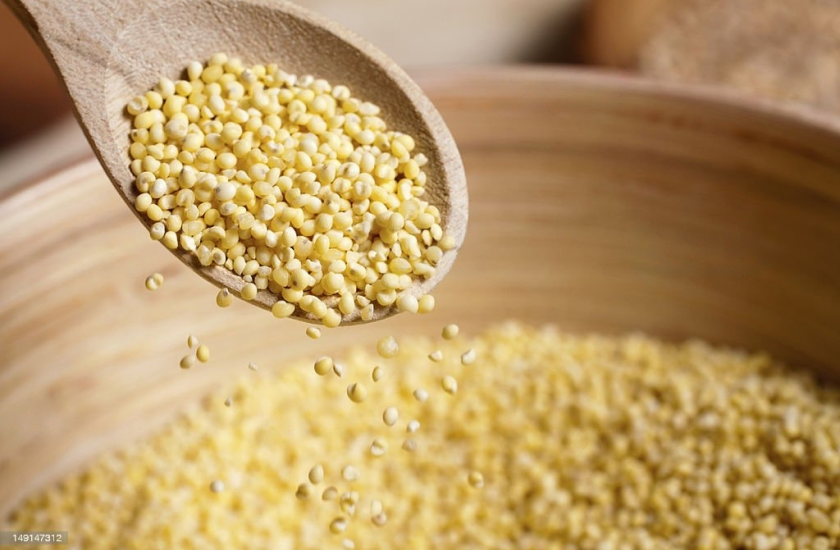Millet
-
Wheat
Wheat
-
Corn
Corn
-
Rice
Rice
-
Soybeans
Soybeans
-
Barley
Barley
-
Sorghum
Sorghum
-
Oats
Oats
-
Millet
Millet
Our Brochures
Contact Us
Social Media


Millet is a cereal of round appearance and intense yellow color, similar to quinoa and considered a ‘superfood’ for its nutritional richness. It is a source of energy and protein.
Millet Crop characteristics
- Botanical Family: Poaceae or Gramineae.
- Crop Cycle: Ranges from 65 to 90 days depending on the variety and climate conditions.
- Climate: Prefers arid and semi-arid climates, being drought-resistant.
- Soil: Adapts well to poor and sandy soils with good drainage, with a pH ranging from 6.0 to 7.0.
- Propagation: Done through direct seeding of seeds.
- Irrigation: Drought resistant, allowing for a more flexible irrigation regimen adapted to arid areas.
Varieties
- Pearl Millet (Pennisetum glaucum): The most globally cultivated variety, known for its large grains.
- Proso Millet (Panicum miliaceum): Widely used in Europe and Asia.
- Finger Millet (Eleusine coracana): Commonly cultivated in regions of Africa.
- Foxtail Millet (Setaria italica): Known for its resistance to pests and diseases.
Millet Nutritional Composition (per 100 grams )
- Carbohydrates: Significant source of energy through present carbohydrates.
- Proteins: Contains a moderate amount of proteins.
- Fiber: Good source of dietary fiber, beneficial for digestion.
- Vitamins: Source of B vitamins and smaller amounts of vitamin E.
- Minerals: Rich in minerals such as phosphorus, potassium, iron, and magnesium.
- Antioxidants: Contains various phenolic compounds that have antioxidant properties.
Common Use
- Human Consumption: Used in the preparation of porridges, cereals, and bakery products.
- Animal Feed: Employed as fodder and in feeding poultry and livestock.
- Alcohol Production: Utilized in the production of alcoholic beverages in some cultures.
- Industrial Uses: Millet straw is used to make brooms, while the grains can be used to produce flour and other products.
Places Where It Is Grown
- Africa: In countries such as Niger, Burkina Faso, and Nigeria.
- Asia: In countries like India and China, with the latter being the largest global producer.
- Europe: Grown to a lesser extent in countries such as Ukraine and Russia.
Medicinal Uses
- Digestion: Its fiber content helps regulate intestinal transit and prevent constipation.
- Cholesterol Control: Millet can aid in reducing bad cholesterol levels in the blood.
- Anti-diabetic: Can help control blood sugar levels due to its low glycemic index.
- Bone Health: Contains essential minerals which are beneficial in maintaining healthy bones.
- Antioxidant: The present antioxidants can help combat oxidative stress and promote overall improved health.
